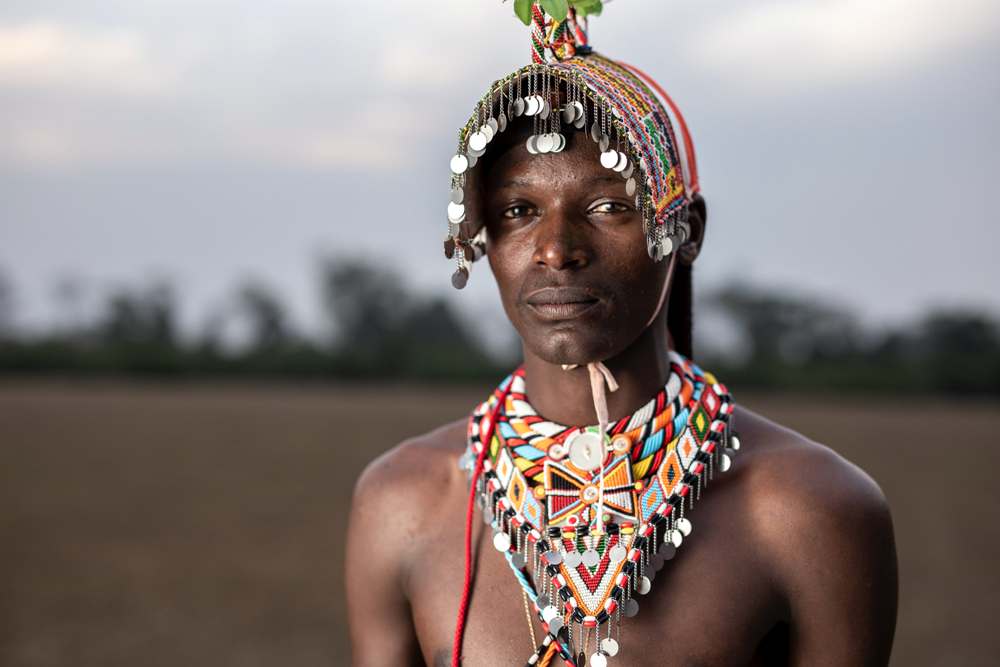Uganda’s cultural diversity is as fascinating as its natural beauty, creating an extraordinary tapestry of human heritage that spans millennia. With over 50 distinct ethnic groups speaking more than 30 indigenous languages belonging to five major linguistic families, the country offers unparalleled cultural experiences that complement its world-renowned wildlife attractions. This remarkable diversity makes Uganda not just a destination for nature lovers, but a living museum of African cultural traditions that have been preserved and celebrated for generations.
The Ancient Kingdoms: Guardians of Royal Heritage
One of the most captivating experiences awaiting visitors is exploring the legendary Buganda Kingdom in central Uganda, where centuries-old royal traditions continue to thrive in the modern era. This powerful kingdom, which has existed for over 700 years, offers travelers an intimate glimpse into Uganda’s regal past and present. The magnificent Kasubi Tombs, a UNESCO World Heritage Site, stand as testament to the architectural brilliance and spiritual beliefs of the Buganda people. These sacred burial grounds of the Buganda kings are not merely historical monuments, but living cultural sites where traditional ceremonies still take place, connecting the past with the present in profound ways.
Visitors can witness the mesmerizing traditional dance performances that tell stories of ancient battles, harvest celebrations, and courtship rituals. The energetic movements of the Kiganda dance, accompanied by the rhythmic beats of traditional drums, create an atmosphere that transports observers back through the centuries. The Buganda parliament, known as the Lukiiko, still convenes regularly, making it possible for travelers to observe traditional governance systems in action.
Beyond Buganda, the ancient kingdoms of Bunyoro, Ankole, and Toro each offer their own unique cultural experiences. The Bunyoro Kingdom, once one of the most powerful in East Africa, provides insights into the region’s complex political history, while Ankole showcases the deep connection between the people and their prized long-horned Ankole cattle. The Toro Kingdom, nestled in the shadow of the Rwenzori Mountains, offers visitors the opportunity to meet one of the world’s youngest monarchs and learn about the kingdom’s fascinating blend of traditional and contemporary governance.
The Batwa: Keepers of Ancient Forest Wisdom
In the misty forests of southwestern Uganda, travelers have the extraordinary opportunity to meet the Batwa pygmies, often referred to as the “first people of the forest.” These indigenous communities, who have called the rainforests home for thousands of years, offer visitors an unparalleled window into humanity’s earliest relationship with nature. The Batwa people possess an encyclopedic knowledge of forest ecology that has been passed down through countless generations, making every encounter a masterclass in traditional environmental stewardship.
During cultural visits, the Batwa elders share captivating stories of their ancestral forest life, demonstrating survival techniques that seem almost magical in their sophistication. Visitors can learn how the Batwa traditionally hunted with bows and arrows, gathered medicinal plants that serve as nature’s pharmacy, built temporary shelters from forest materials, and navigated the dense jungle using natural landmarks invisible to untrained eyes. Their intimate knowledge extends to identifying over 200 plant species and their various uses, from food and medicine to tools and building materials.
The Batwa’s oral tradition is particularly rich, featuring creation myths, moral tales, and historical accounts that have preserved their cultural identity despite centuries of change. Their traditional music and dance, performed with instruments crafted from forest materials, create an ethereal atmosphere that connects visitors to the primordial relationship between humans and nature. These cultural encounters are not merely performances but sacred sharing of knowledge that helps preserve this ancient culture while providing economic opportunities for Batwa communities.
The Karamojong: Nomadic Traditions of Northern Uganda
In the vast, semi-arid plains of northeastern Uganda, the proud Karamojong people maintain one of Africa’s most authentic pastoral lifestyles. These semi-nomadic cattle herders, believed to have migrated from Ethiopia several centuries ago, offer visitors a glimpse into a way of life that has remained largely unchanged despite the pressures of modernization. The Karamojong’s deep spiritual connection to their cattle goes far beyond economic considerations – these animals represent wealth, social status, and cultural identity in ways that urban dwellers can barely comprehend.
The Karamojong people are renowned for their striking traditional attire, which varies according to age, gender, and social status. Young warriors wear elaborate ostrich feather headdresses and adorn themselves with intricate beadwork and body painting that tells stories of their achievements and aspirations. The women’s colorful traditional dresses, made from locally woven fabrics and adorned with metal jewelry, create a visual spectacle that photographers and cultural enthusiasts find irresistible.
Visitors to Karamoja can participate in traditional ceremonies such as the Akiriket coming-of-age ritual, witness traditional wrestling matches that determine social hierarchy, and observe the complex cattle-trading negotiations that form the backbone of Karamojong society. The community’s traditional architecture, featuring circular thatched-roof huts arranged in defensive formations called kraals, reflects centuries of adaptation to the harsh semi-arid environment and the need for protection against cattle raiders.
Cultural Immersion: Beyond the Surface
Uganda’s cultural experiences extend far beyond mere observation, offering visitors the opportunity for deep, meaningful engagement with local communities. Traditional music sessions feature an array of indigenous instruments, from the haunting sounds of the adungu (bow harp) to the powerful rhythms of the ngoma drums that can be heard echoing across valleys during evening celebrations. Each ethnic group has developed its own musical traditions, creating a rich symphony of sounds that reflects the country’s cultural diversity.
The art of storytelling remains vibrantly alive throughout Uganda, with skilled narrators weaving tales that blend history, mythology, and moral instruction. These stories, often accompanied by dramatic gestures and audience participation, serve as entertainment, education, and cultural preservation all at once. Visitors can join evening storytelling circles around crackling fires, where the boundaries between cultures dissolve and universal human experiences take center stage.
Culinary adventures form another crucial component of cultural immersion in Uganda. Each region offers distinctive flavors and cooking techniques that reflect local ingredients, historical influences, and cultural preferences. From the plantain-based dishes of the central region to the millet-based cuisine of the north, and the rich stews of the west that incorporate groundnuts and vegetables, Ugandan cuisine tells the story of the country’s agricultural diversity and cultural exchange.
Traditional craft demonstrations provide insight into the artistic heritage of various communities. Visitors can observe master weavers creating intricate baskets from banana fibers, watch skilled blacksmiths forging tools using ancient techniques, and participate in pottery-making sessions where clay is transformed into functional and decorative items using methods passed down through generations.
Contemporary Cultural Renaissance
Uganda’s cultural landscape is not static but continues to evolve as traditional practices blend with contemporary influences. Modern Ugandan artists, musicians, and writers draw inspiration from their cultural heritage while addressing contemporary themes, creating a vibrant cultural scene that bridges past and future. Cultural festivals throughout the year celebrate this diversity, with events like the Bayimba International Festival showcasing traditional and contemporary arts side by side.
The country’s commitment to preserving its cultural heritage while embracing progress is evident in various community-based tourism initiatives that empower local communities to share their traditions while generating sustainable income. These programs ensure that cultural encounters are authentic, respectful, and mutually beneficial for both visitors and local communities.
Educational cultural centers and museums throughout the country serve as repositories of knowledge and venues for cultural exchange. The Uganda Museum in Kampala houses extensive collections of traditional artifacts, while regional cultural centers provide platforms for local artists and cultural practitioners to showcase their skills and pass on knowledge to younger generations.
Conclusion: A Journey of Discovery
Uganda’s cultural heritage offers visitors far more than picturesque photo opportunities – it provides transformative experiences that challenge perspectives, broaden understanding, and create lasting connections between people from vastly different backgrounds. These encounters offer profound insights into Uganda’s multifaceted identity that extends far beyond its globally celebrated wildlife attractions.
Whether participating in a traditional wedding ceremony, learning ancient hunting techniques from Batwa elders, or sharing meals with Karamojong families under the vast African sky, visitors discover that Uganda’s greatest treasures are not only found in its national parks but in the hearts and minds of its people. These cultural experiences create memories that last a lifetime while contributing to the preservation of traditions that might otherwise disappear in our rapidly changing world.
The beauty of Uganda’s cultural diversity lies not just in its variety but in the warmth and openness with which communities welcome visitors into their lives, sharing their most precious possessions – their stories, traditions, and worldviews. This generosity of spirit embodies the true essence of Ubuntu – the African philosophy that recognizes our shared humanity and interconnectedness, making every cultural encounter in Uganda a step toward greater understanding and appreciation of our diverse world.

